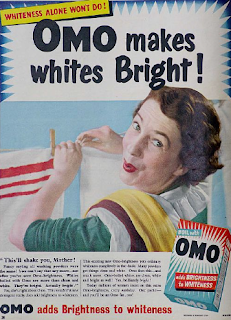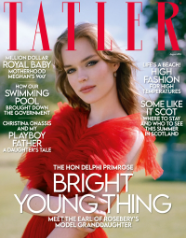Adverting CSP 1: OMO print advert
OMO Print Advert
1. What year was the advert produced?
The year the advert was produced in 1955.
2. How were women represented in most adverts in the 1950s? Add as much detail to this answer as you can as these are the social, cultural, and historical contexts we will need to write about in the exam.
Women were most represented in most adverts in the 1950s by representing them as that they are just staying at home and doing domestic house duties. Women were presented as being weaker and less dominant than men.
3. How do the heading message ('OMO makes whites bright') and the style of the text promote the product?
The heading message of OMO and the style of the text promote the product by making it look more bold and in a big font that way we can see and know what it is about. The design of the background shows that there are bursts of explosion to show that the product is really something and, makes the audience feel shocked by how effective the product is.
4. Analyse the mise-en-scene in the advert (CLAMPS): how are costume, make-up, and placement of the model used to suggest women's role in society?
The costume of the woman shows that the woman is wearing casual clothes, comfortable ones, which suggests to us that she is working at home and doing her duties by washing the clothes. The lighting of the advert is very high key lightning as we can see everything more clearly and, makes the audience feel more interested as the advert is bright and shows us how the product makes everything much cleaner so it becomes all white. The facial expressions of the woman in the advert show that she is full of happiness, and sastification while using the OMO product to help clean her family`s clothes. The makeup that she is wearing suggests that even though she is doing her job she also has to look good so this means that women have to look good, presentable, and still look pretty and, not stressed, that her appearance still matters a lot. The placement of the woman in the advert shows us that in the middle she has a towel in her hand and she is hanging the clothing on the pegs showing us how bright and effective the product is.
5. Why is a picture of the product added to the bottom right of the advert?
A picture of the product was added to the bottom right of the advert because including the image of the product ensures that the audience can easily identify the OMO product being advertised.
6. What are the connotations of the chosen colors in this advert - red, white and blue?
- The color red is commonly linked to intensity, and passion, creating a feeling of warmth and intensity. When used in a laundry product like Omo, the color red can imply its efficient cleaning power. It effectively communicates a message of action, highlighting the product's importance.
- The color White links to purity and, that the clothes are meant to be clean.
- The color Blue connotates freshness, cleanness, and calmness.
- The anchorage text uses persuasive language to encourage the audience to buy the product by making the part "This'll shake you, Mother" in bold, it also shows about housewives and, women, the text mostly refers to mums as mums are the ones who take care of their family and do household duties, as they mostly use cleaning products, the text is also addressing mums as most mums are to ones who will give advice to their daughters on what products to use however in this advert it is showing the daughter is the one who is showing the product to the mothers to use it or not, which is sugggesting that the product is effective. The word "White" is used repeatedly more than once to suggest that this product makes clothes more cleaner and, really works.
- The preferred reading for this advert is in 1955 the producers wanted the audience to think that the product is effective and this is the reason why many women love doing domestic household duties and staying at home.
- The oppositional reading for this advert is modern audience may desire advertisements that promote a more diverse and empowering representation of women. Viewers may criticize the advertisement if the woman portrayed only fits in beauty standards, or if she is only shown doing household tasks. They might argue that the lack of diversity and the absence of women in various roles and activities are not adequately represented.



Comments
Post a Comment